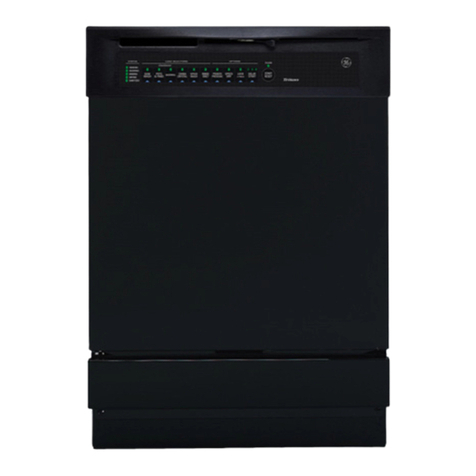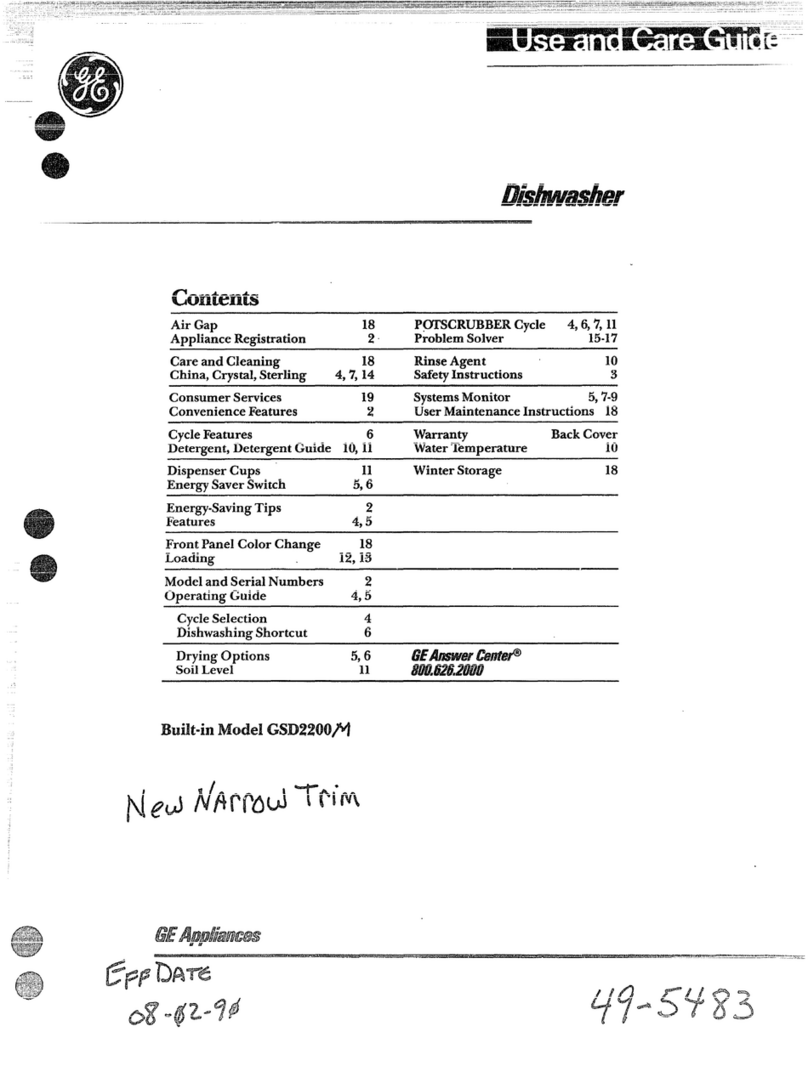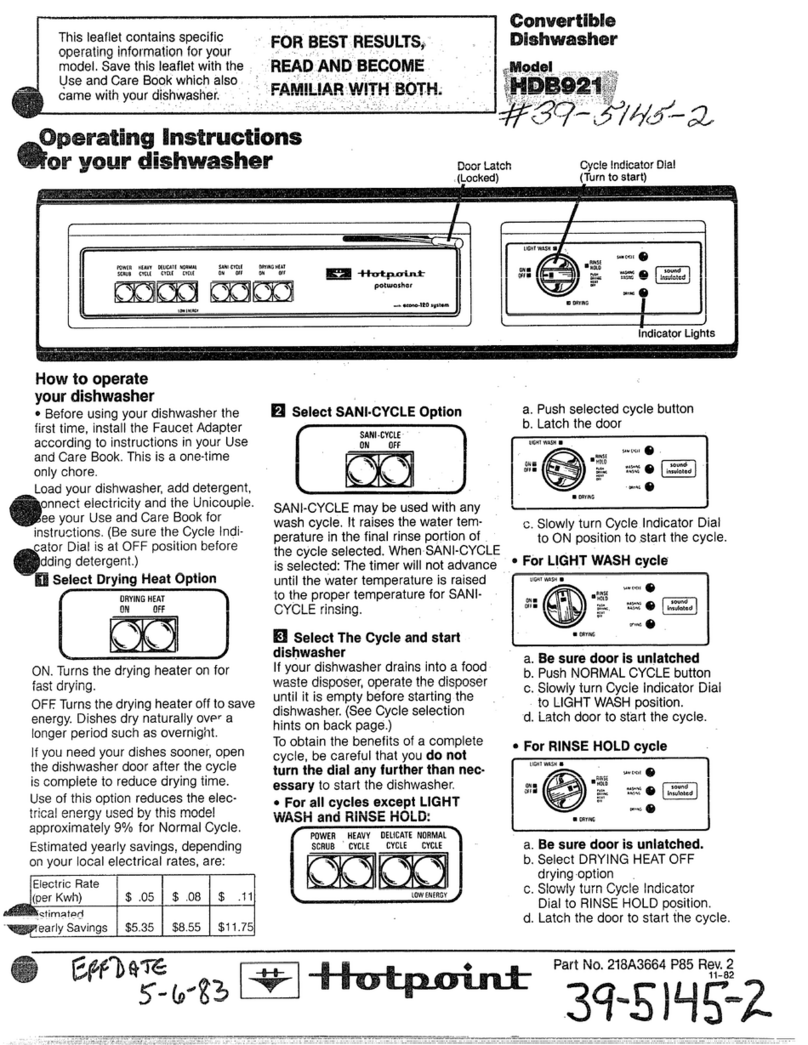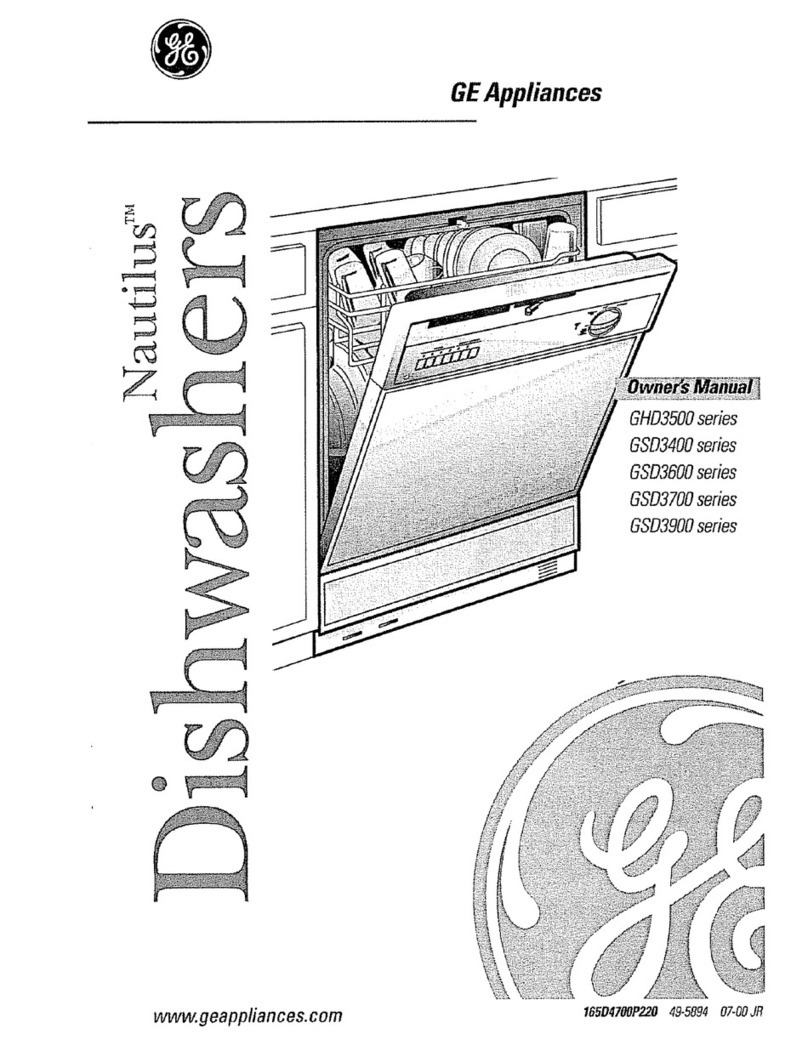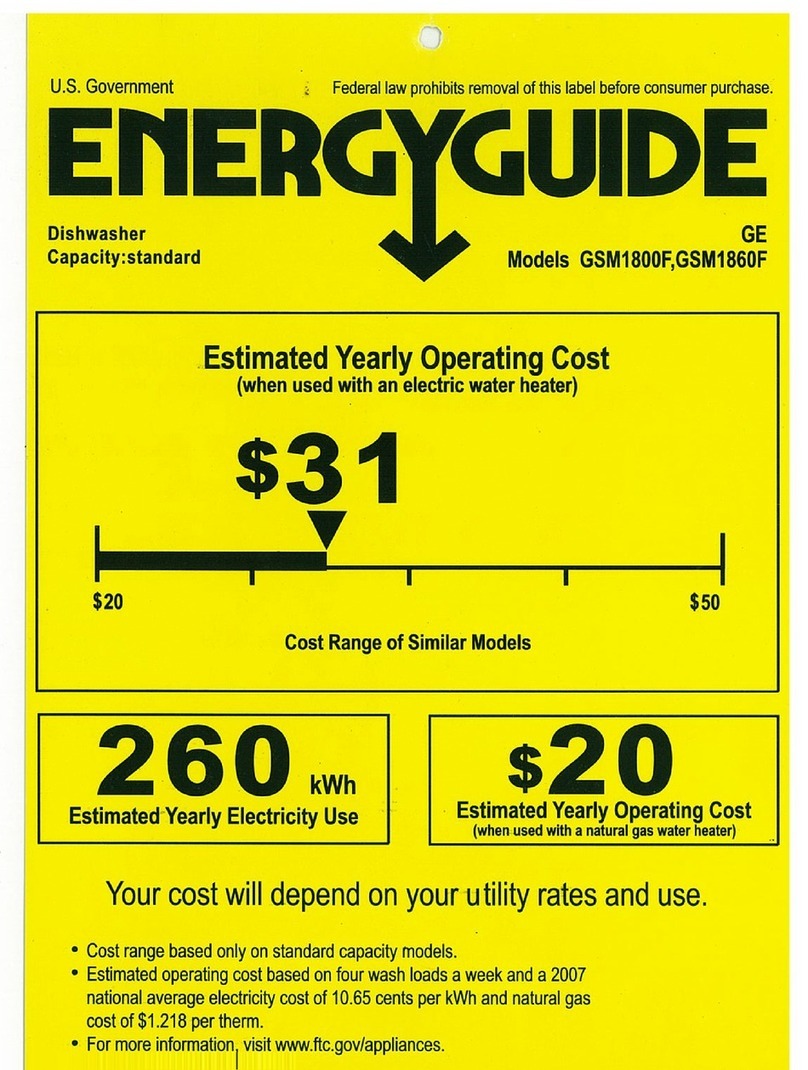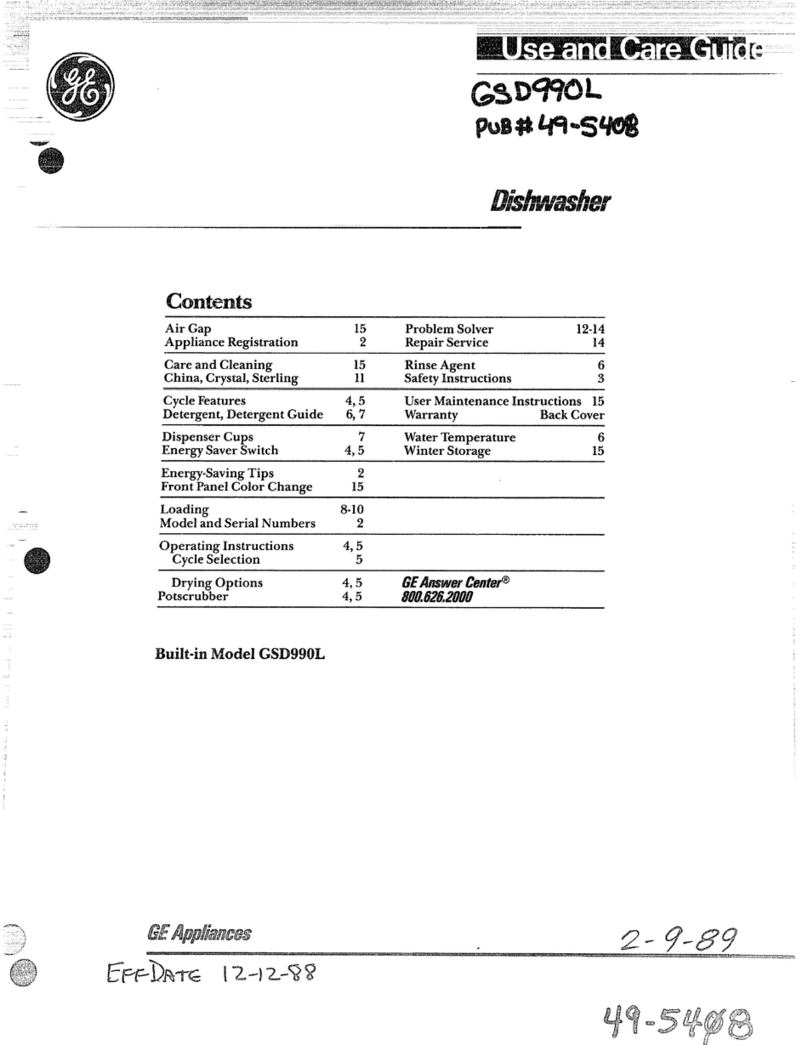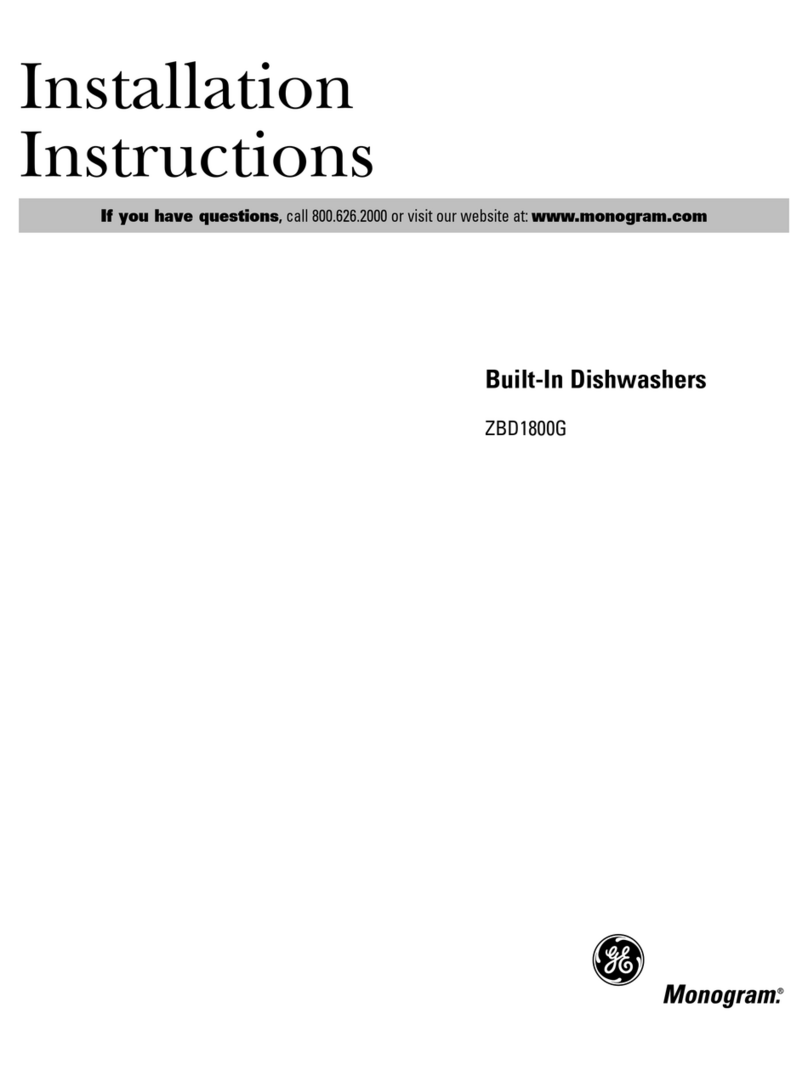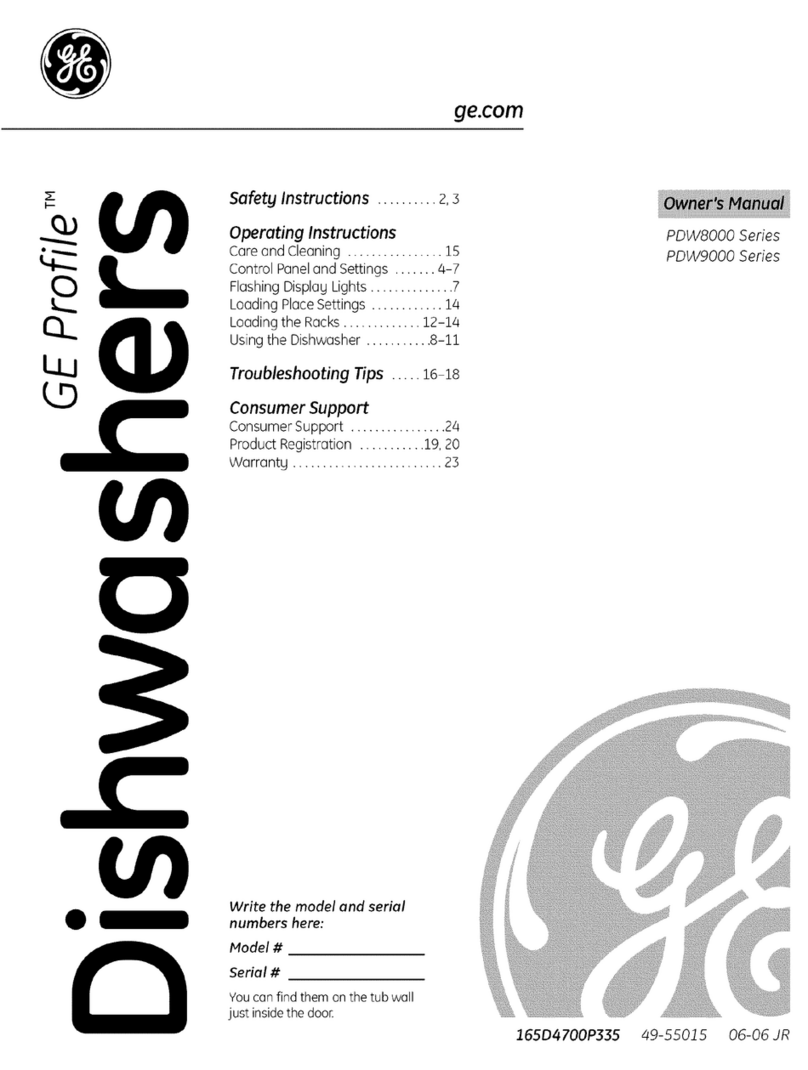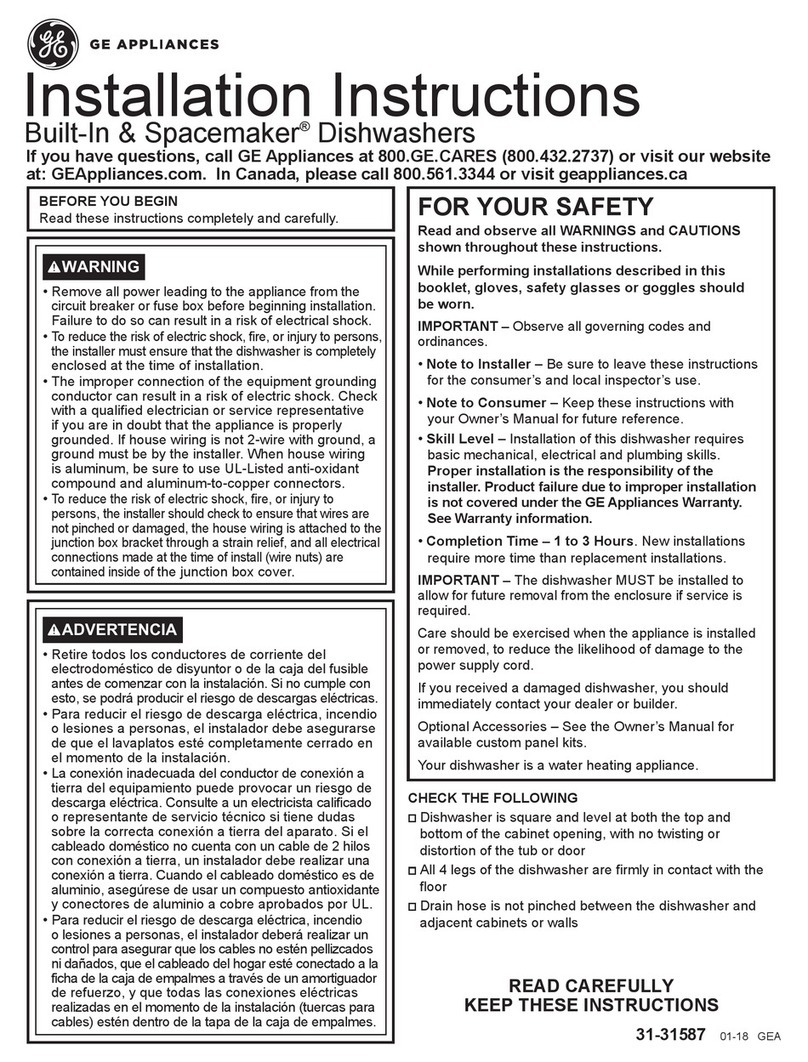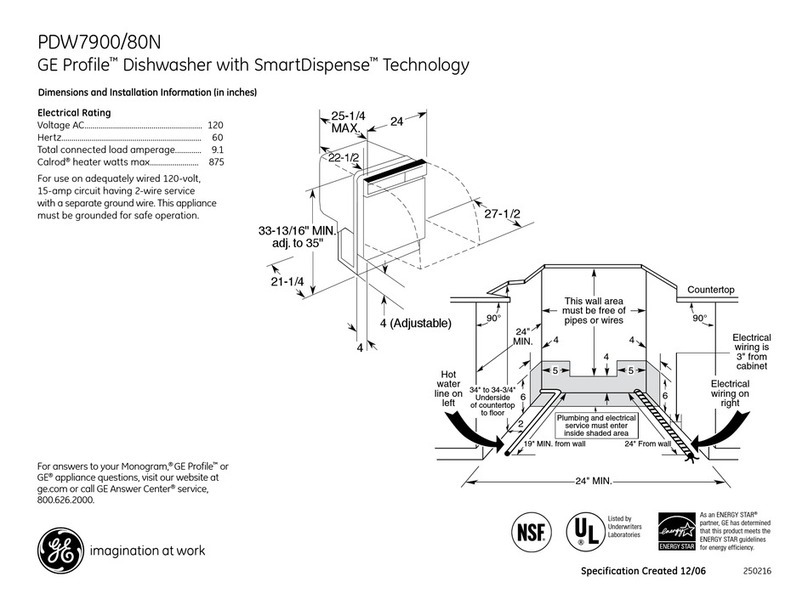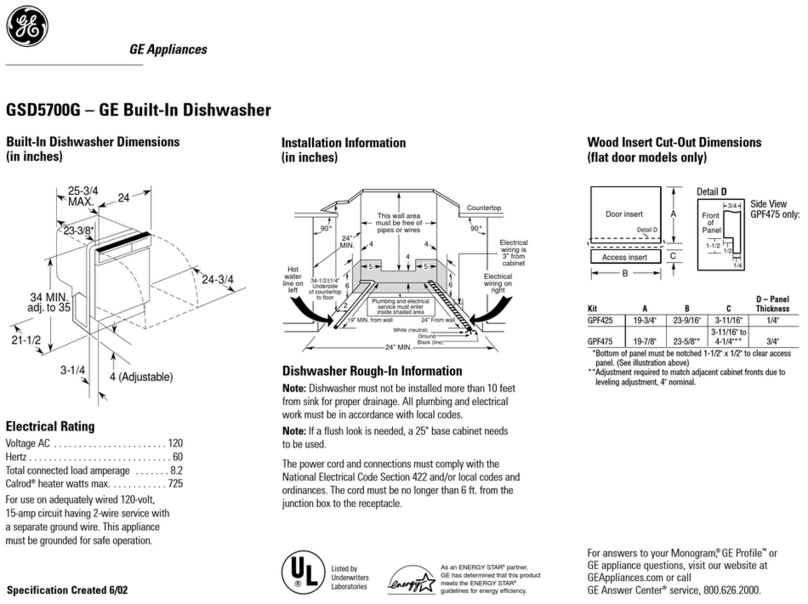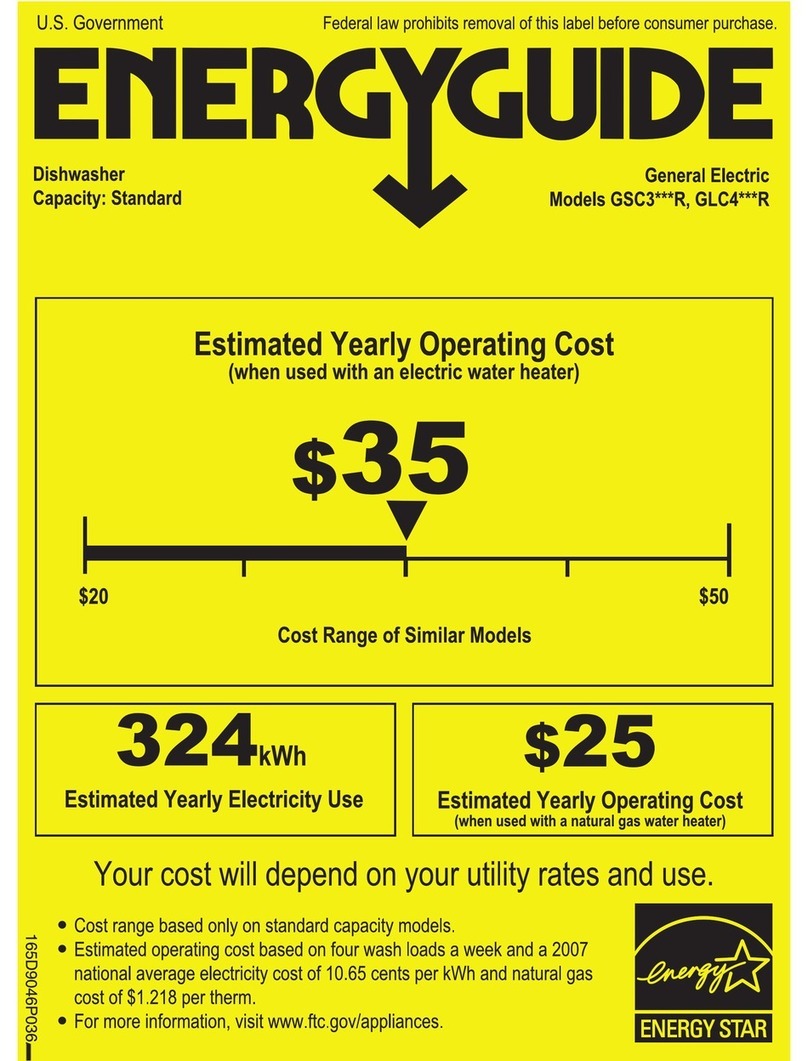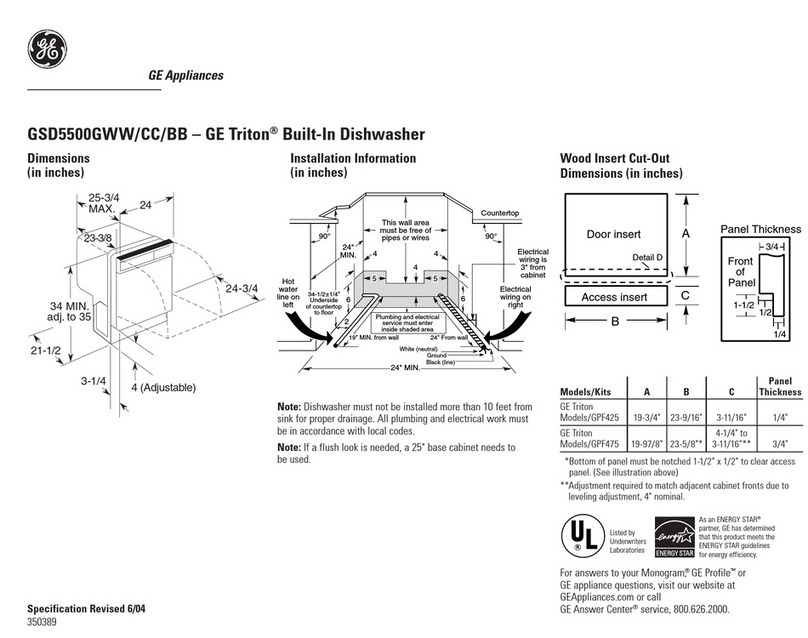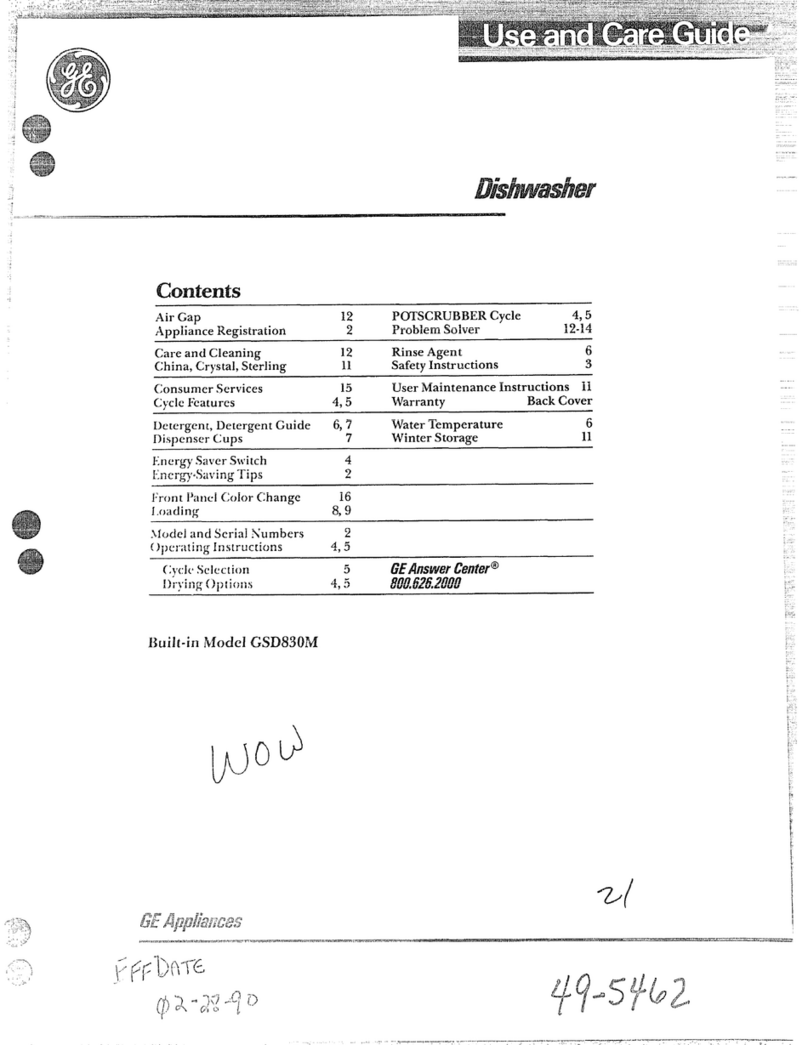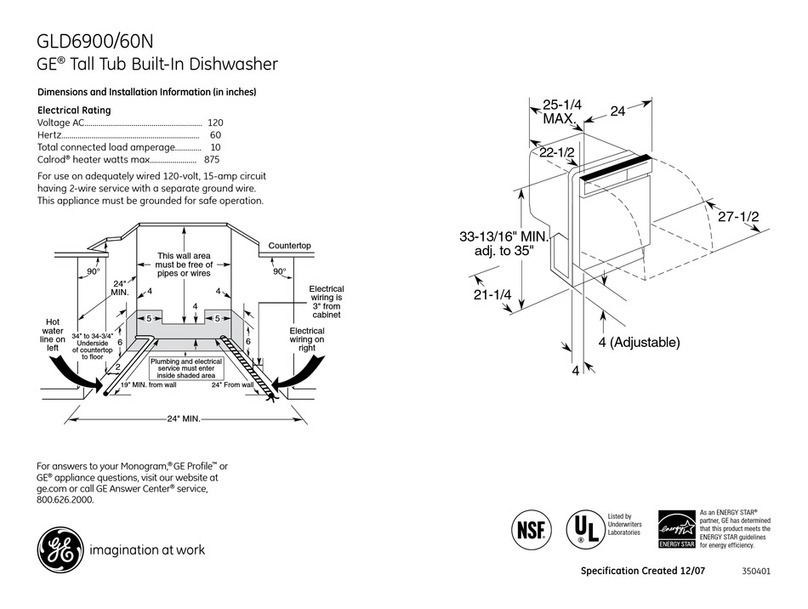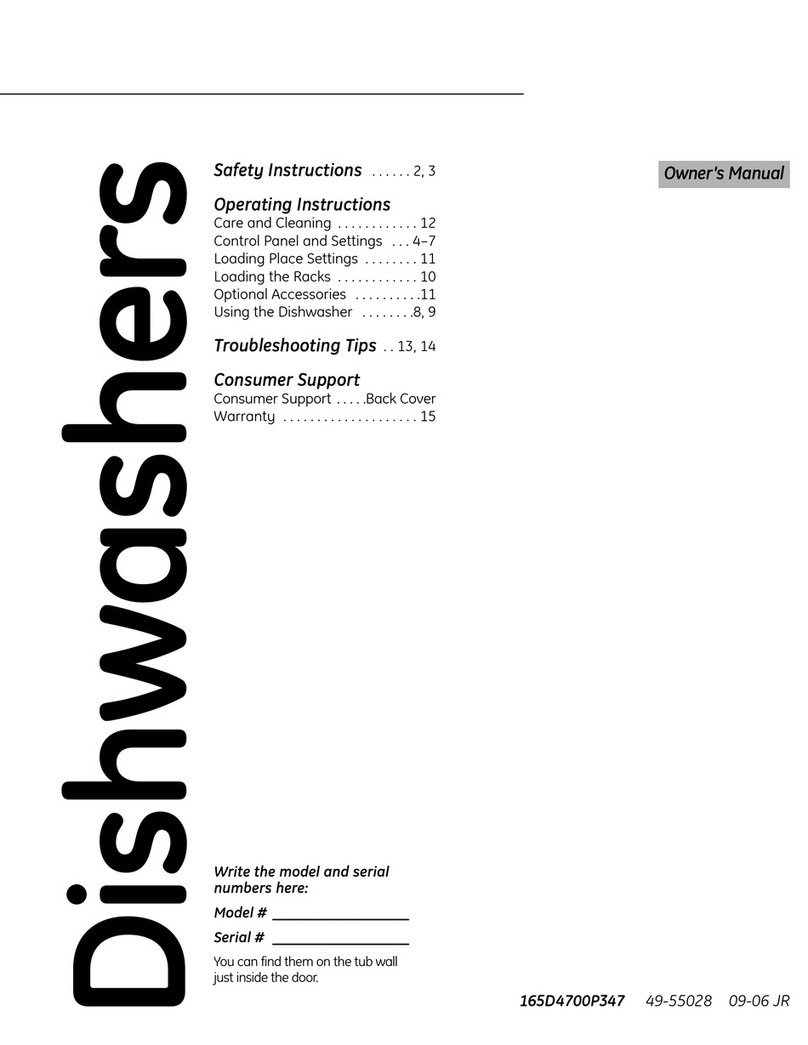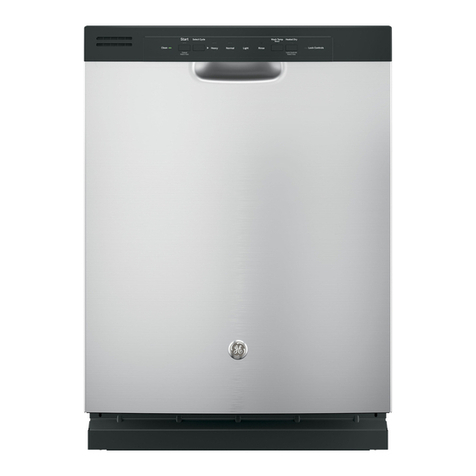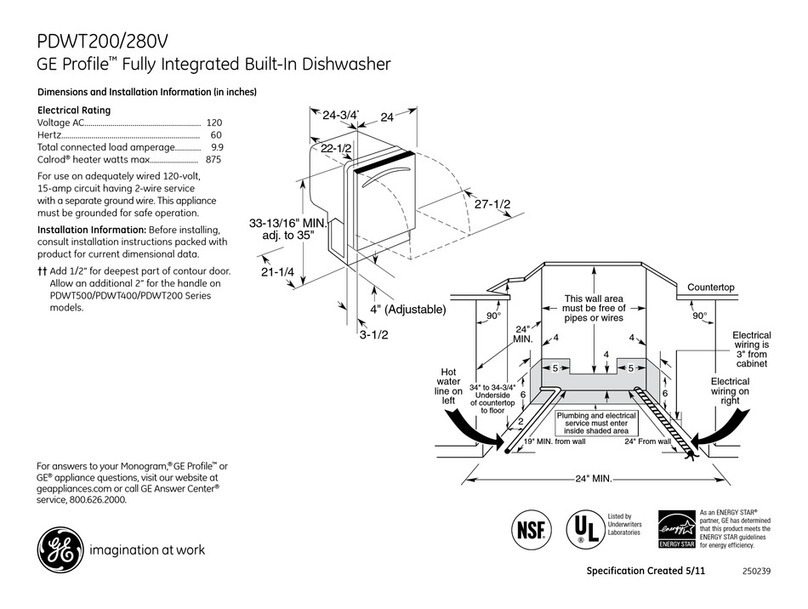
3
INFORMACIN IMPORTANTE DE SEGURIDAD
/($72'$6/$6,16758&&,21(6$17(6'(86$5³
GUARDE ESTAS INSTRUCCIONES
¡ADVERTENCIA!
Para su seguridad, debe cumplirse con la información de este manual a fin de minimizar el
riesgo de incendio o explosión, descarga eléctrica o para prevenir daños a la propiedad, lesiones
personales o la muerte.
SEGURIDAD DEL CALENTADOR DE AGUA
Los elementos lavados en el modo anti-bacterial, si
se encuentra disponible, pueden quedar calientes al
tacto. Tenga cuidado antes de tocarlos.
Utilizar un detergente no
diseñado específicamente
para lavaplatos provocará
que el aparato se llene de
espuma.
Si su lavaplatos se encuentra
conectado a un interruptor de
pared, verifique que el interruptor se
encuentre encendido antes del uso.
En lavaplatos con controles electrónicos,
si usted elije apagar el interruptor de
pared entre ciclos de lavado, deje pasar
5-10 segundos después de encender el interruptor
antes de presionar ON/OFF para permitir que el
control se inicie.
Elementos no aptos para lavaplatos: No lave
elementos como filtros de limpiadores de aire
electrónicos, filtros de hornos y pinceles de pintura
en su lavaplatos. Pueden producirse daños en el
lavaplatos y decoloración o manchas en el aparato.
Se requiere una supervisión estricta cuando cualquier
aparato es utilizado por niños o en su cercanÌa.
Cargue elementos livianos y plásticos de modo que
no se desplacen y caigan al fondo del lavaplatos,
ya que pueden entrar en contacto con el elemento
calentador y dañarse.
INSTALACIÓN Y MANTENIMIENTO ADECUADOS
Este lavaplatos debe instalarse de manera adecuada y ubicarse de acuerdo con las Instrucciones
de Instalación antes de comenzar el uso. Si usted no ha recibido una página de Instrucciones de
instalación con su lavaplatos, puede obtener una visitando nuestro sitio Web en GEAppliances.com.
Conecte el lavaplatos/aparato a un sistema de
cableado permanente con conexión a tierra o debe
utilizarse un conductor de conexión a tierra del
equipamiento con los conductores de circuito, y
debe conectarse a la terminal de conexión a tierra o
conductor del aparato.
Una conexión inadecuada del conductor de conexión
a tierra de equipo puede provocar un riesgo de
descarga eléctrica. Consulte a un electricista
calificado o representante de servicio técnico si tiene
dudas sobre la correcta conexión a tierra del aparato.
Elimine los aparatos que no va a utilizar más y el
material de empaque o envío como corresponde.
No intente reparar o cambiar ninguna pieza de
su lavaplatos a menos que esté específicamente
recomendado en este manual. Cualquier otro servicio
debe realizarlo un técnico calificado.
Para minimizar la posibilidad de una descarga
eléctrica, desconecte este aparato de la fuente
de energía antes de realizar cualquier clase de
mantenimiento.
NOTA: Apagar el lavaplatos no desconecta el aparato
del suministro de energía. Recomendamos que un
técnico calificado realice el servicio técnico de su
aparato.
¡ADVERTENCIA!
PRECAUCIÓN: Para evitar lesiones menores y daños a la propiedad
Bajo ciertas condiciones, puede producirse gas de hidrógeno en un calentador de agua que no se ha usado
durante dos semanas o más. EL GAS DE HIDRÓGENO ES EXPLOSIVO.
Si el agua caliente no se ha utilizado por dos semanas o más, evite la posibilidad de daños o lesiones
abriendo todos los grifos de agua caliente y dejándolas correr durante varios minutos. Haga esto antes de
utilizar cualquier aparato eléctrico que se encuentre conectado al sistema de agua caliente. Este simple
procedimiento permitirá que se libere cualquier clase de acumulación de gas de hidrógeno. Ya que el gas
es inflamable, no fume o utilice una llama abierta o un aparato durante este proceso.
GEAppliances.com

